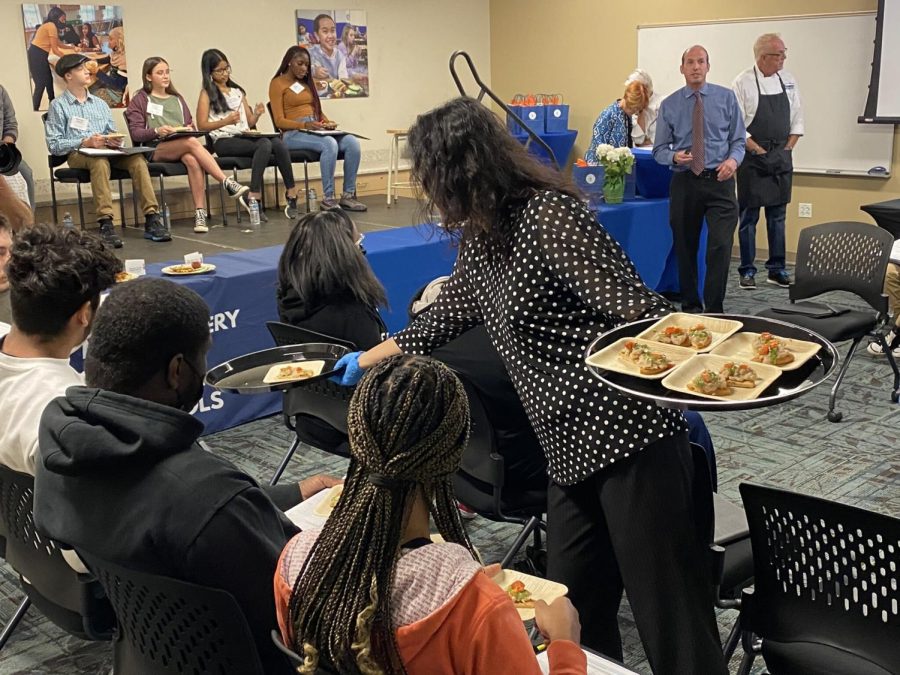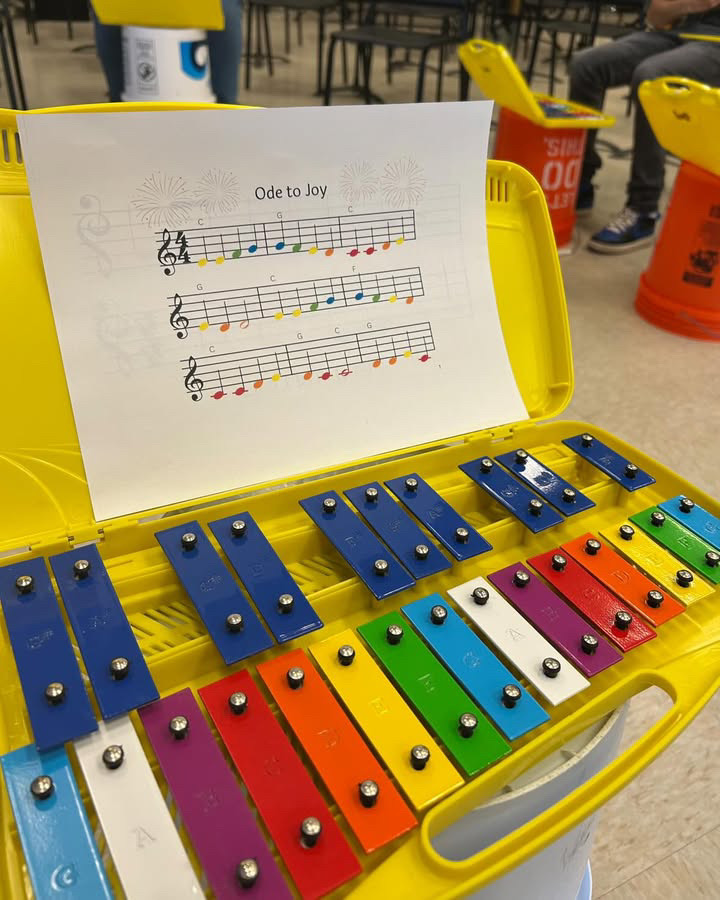MCPS to expand vegan lunch offerings in school cafeterias
Photo courtesy MCPS Division of Food and Nutrition Services Twitter
Silver Diner and MCPS presented their respective versions of the local restaurant’s food at a taste-testing event on Sept. 30.
October 14, 2022
MCPS’ Division of Food and Nutrition Services announced plans to introduce new vegan menu items to school cafeterias this year through a partnership with nonprofit Real Food for Kids and Silver Diner at a taste-testing event on Sept. 30.
The new offerings are part of a systemwide response to recent calls from vegan and vegetarian students to offer more plant-based options in school cafeterias, according to Wellness Supervisor Shawn Sawko. In collaboration with Silver Diner Executive Chef Ype Von Hengst, the district selected meals created by Silver Diner and attempted to replicate them. Then, both Silver Diner and MCPS presented their respective versions of the food at the taste testing event on Sept. 30.
The school district’s latest push to introduce more vegan offerings is set to begin with Yellow Chickpea Curry, which will appear in school cafeterias on Oct. 27 along with its meat counterpart, Yellow Chicken Curry. The arrival of new vegan items came after school food watchdog group Healthy School Food Maryland awarded MCPS a C+ on the 2017 School Food Environment Grade, and a B in 2019. The group’s ratings reflect the quantity of plant-based options, menu variety and food label transparency in MCPS’ school cafeterias.
To gather feedback on the school district’s current menu offerings, Sawko said that he has frequently met with students from across the county since last year. Many students expressed concerns over the lack of options for vegans and vegetarians, he said.
“What we’ve been hearing is that they just want their meals to be more inclusive, meaning options that cater towards vegan, vegetarian, halal and kosher diets,” Sawko said.
To develop the new recipes, MCPS worked with award-winning chef Ype Von Hengst from Silver Diner. Von Hengst won the Food Network’s “Chopped” contest in 2017, and specializes in creating healthier menu items that use fresh and local products. In preparation for the September taste-testing event, MCPS attempted to recreate Silver Diner foods without using the local restaurant chain’s recipe — a challenge that allowed them to create their own unique offerings that still maintained similarities to the dishes from the local restaurant chain, Sawko said.
Amelia Otte, a junior, has never bought school lunch due to the limited variety of plant-based options.
“I just prefer to bring my own lunch because I know what I’m getting,” said Otte, a vegetarian. “I think that is probably due to the lack of plant-based options, and from what I’ve heard, the past plant-based options haven’t been appealing or contained enough protein.”
In any given month, high school cafeterias serve a rotation of vegan options that include veggie burgers, vegan spicy chicken tacos and vegan sweet and sour chicken with rice, as well as a vegetarian mac n’ cheese with vegan chicken nuggets and a roll. The Division of Food and Nutrition Services must develop, test and revise recipes to ensure that they adhere to MCPS’ wellness regulations, which limit the sodium, sugar, fat and calorie count of the district’s foods.
Each dish must also earn the approval of focus groups composed of MCPS middle and high school students. If a majority of a focus group’s participants deem an item suitable for school menus, it will undergo minimal recipe testing before moving on to the next focus group, Sawko said. If a majority of students don’t like the food, the recipe returns to the Division of Food and Nutrition Services for further testing and revision.
Former vegan Taylor Satterfield, a junior, said that she brought her own lunch to school each day because she was never sure if there would be an available – or appealing – vegan option in the cafeteria, she said.
“I had my own lunch because the vegan options that were available in school were not appetizing and I was never sure if there would be something tasty that I could eat,” Satterfield said. “So I think giving a greater variety of meals to students who are vegetarian or vegan like I was is important.”
In a focus group that evaluated prospective vegan additions to the school district’s menu, 95% of students indicated that they’d like to see sweet and spicy sweet potatoes on school menus, while 80% said they wanted to see the three bean torta on menus. These items will likely appear on cafeteria menus this spring, after successfully completing the taste-testing and revisions process, Sawko said.
Junior Lauren Kim said that she’s looking forward to choosing from a greater variety of the cafeteria menu items and may try the new vegan options when they arrive in schools.
“I know people in the cafeteria often serve vegan chicken nuggets, and lots of people order those,” Kim said. “I think if the vegan options are tasty, people will try them. I do buy lunch every day at school and I think having chicken nuggets repetitively is tiring, and I wish that could change.”
Sawko was excited by students’ responses at the focus group and hopes that the new offerings will inspire more non-vegans to try vegan menu options in school lunchrooms, he said.
“We know that the first time a student sees a food, they’re not going to immediately grab it,” Sawko said. “But maybe after the second or third time they’ll experiment with it and see if they actually like it. Some of the food has been really fantastic and it’s really convinced other people who don’t normally eat vegan or vegetarian foods to try it out.”










